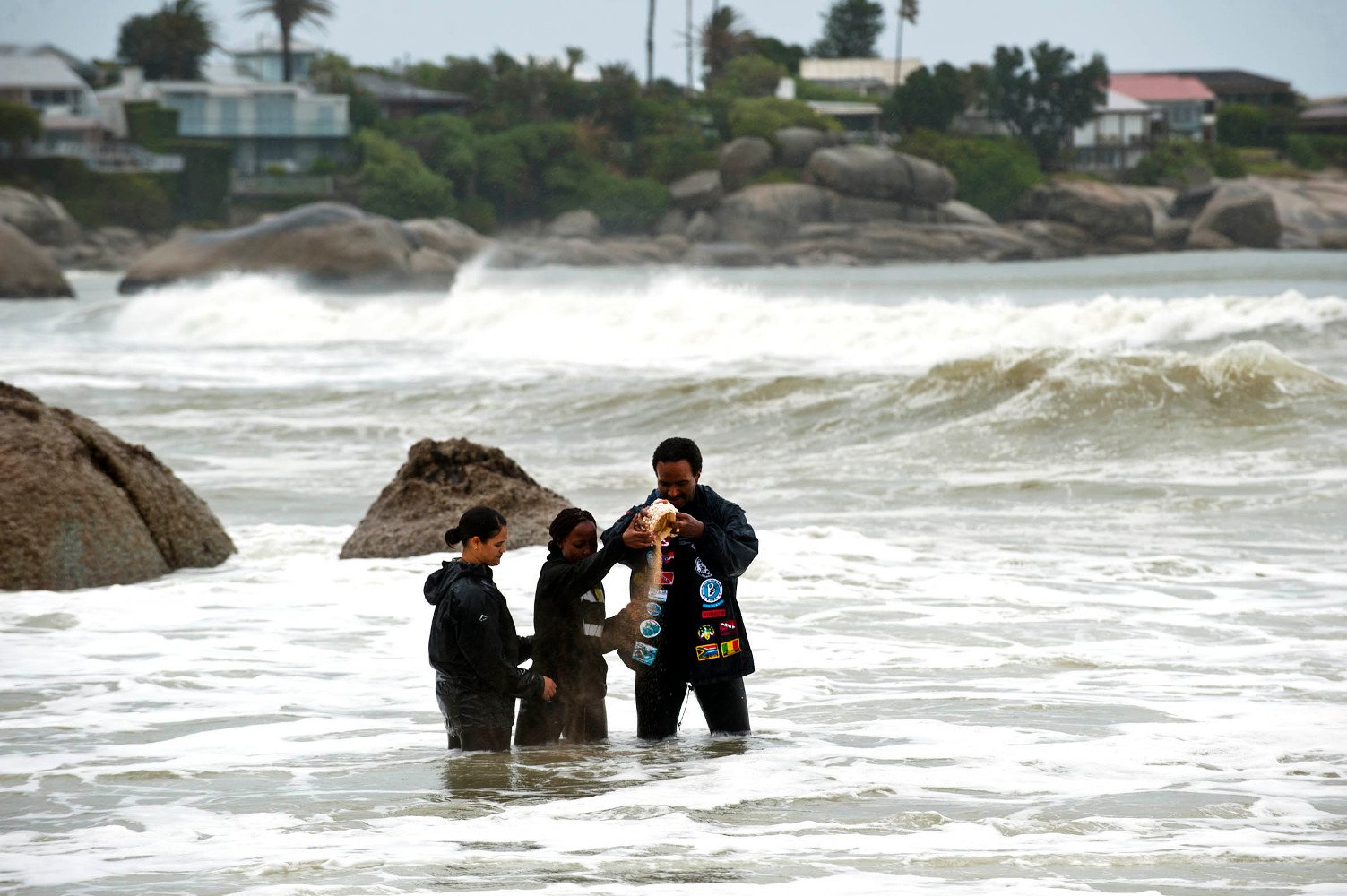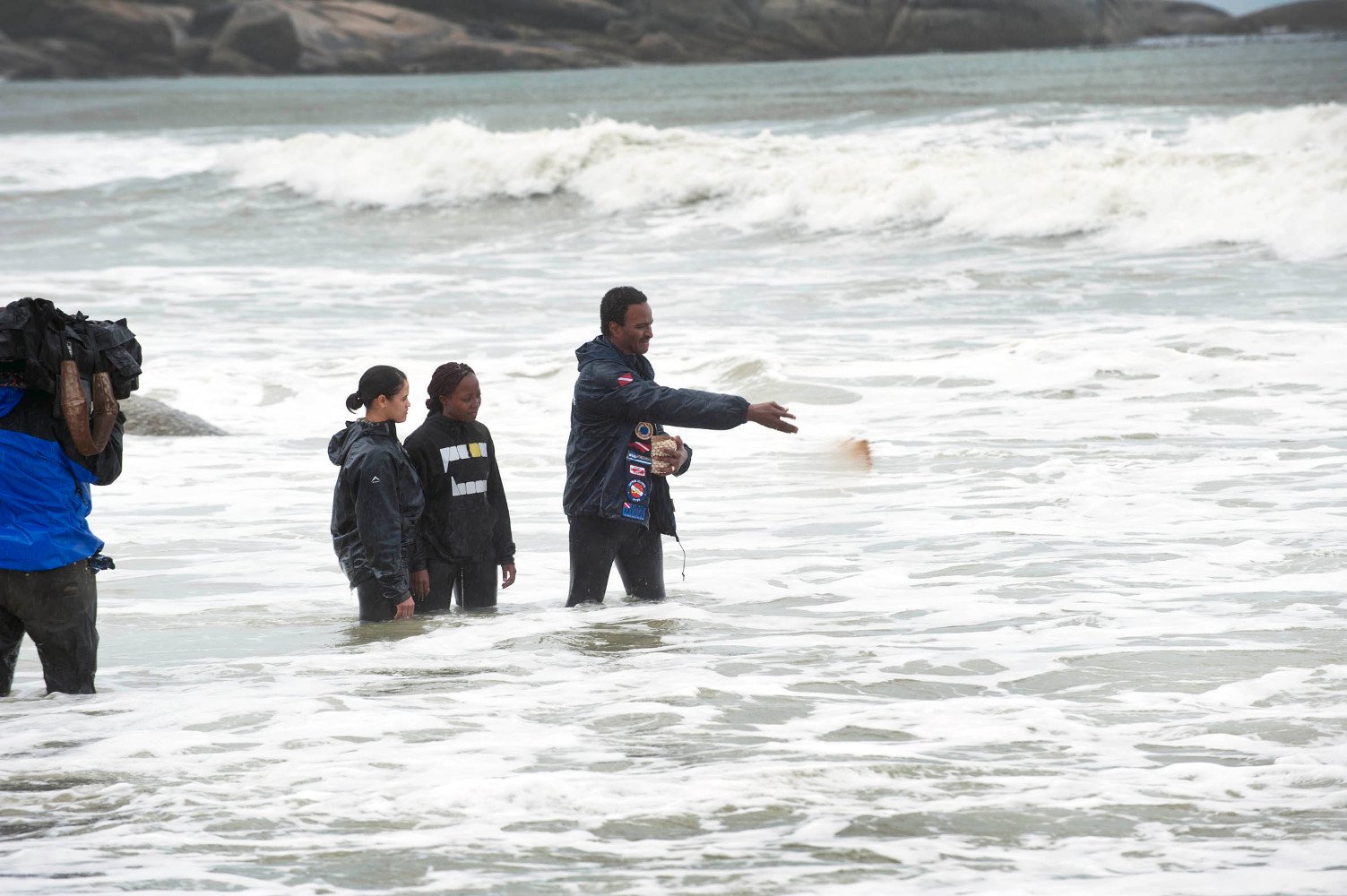South Africans gathered at Clifton beach on Tuesday to remember the slaves that died at sea. A shipwreck was recently found.
The Portuguese ship, the São José-Paquete de Africa , was sailing from Mozambique to Brazil when it sank in turbulent waters near Cape Town in December 1794. Researchers say it is the first time that the remains of a slave ship that went down with slaves aboard has been identified.
Albie Sachs , a former constitutional court judge, will give a speech welcoming diplomats, activists and community leaders at the ceremony on Clifton beach, near the wreck site. “It’s profound and terrible to feel this is one of the most beautiful beaches in the whole world and within such a short distance lie the bodies of 200 slaves who died there,” the 80-year-old said on Monday.
“Presumably they were still in shackles or they could have swum to shore. This has been an untold story that has repercussions and reverberations for us today. Somehow their memories survive even though they’re not in the history books.”

The São José was making one of the earliest voyages of the transatlantic slave trade from east Africa to the Americas, which persisted well into the 19th century. More than 400 000 east Africans, shackled in ships’ holds, are estimated to have made the four-month, 7 000-mile journey from Mozambique to the sugar plantations of Brazil between 1800 and 1865.
The São José had only been sailing for 24 days when, tossed by strong winds in view of Lion’s Head mountain, it was smashed on submerged rocks 100 metres from shore. An estimated 212 slaves perished. About 300 survived and were resold into slavery in the Cape. The Portuguese captain, Manuel João, and his crew were also rescued.
The wreck lay undisturbed for nearly 200 years but was found in the mid-1980s by local amateur treasure-hunters who misidentified it as the remains of an earlier Dutch vessel. But in 2011 Jaco Boshoff, a maritime archaeologist, discovered the captain’s account of the wrecking of the São José in local archives. Those on board “made ropes and baskets and continuing like this were able to save some men and slaves until five in the evening, when the ship broke to pieces”, it recorded.
Evidence steadily built. Copper fastenings and copper sheathing indicated a wreck of a later period, and there was also iron ballast – often found on slave ships as a means of counterbalancing the variable weights of their human cargo. The Slave Wrecks Project, an international collaboration, found an archival document in Portugal stating that the Saõ José had loaded 1 500 iron blocks of ballast before she departed for Mozambique.
Further research located a document in which a slave is noted as sold by a local sheikh to the captain of the Saõ José prior to its departure, definitively identifying Mozambique Island as the port of departure for the slaving voyage.

Objects retrieved from the ship this year include fragile remnants of shackles, iron ballast to weigh down the ship and its human cargo, copper fastenings and a wooden pulley block. There has been no trace of human remains.
Boshoff, co-originator of the Slave Wrecks Project and principal archaeological investigator on the Saõ José excavation, said: “The more information we get the better. The memorial service will be a bit more emotional, but when we start work again we’ll have to dial back the emotion.”
He added: “Every day there are discoveries made but, in the history of the slave trade, this one is important. It’s the first time we’ve been able to look at a ship that sank with slaves still on board.”
The wreck site is located between two reefs and is prone to strong swells, making conditions difficult for archaeologists. So far only a small percentage has been excavated. “There is a lot to do,” Boshoff said. “We haven’t scratched the surface. It’s a wide-ranging project and I’m fortunate it’s on my doorstep.”
A public symposium, called Bringing The São José Into Memory, will be held in Cape Town on Wednesday. Some of the recovered objects are to be displayed on long-term loan at the Smithsonian’s new National Museum of African American History and Culture in Washington.
Lonnie Bunch, director of the museum, who is due to attend Tuesday’s event, said: “Perhaps the single greatest symbol of the transatlantic slave trade is the ships that carried millions of captive Africans across the Atlantic never to return.
“This discovery is significant because there has never been archaeological documentation of a vessel that foundered and was lost while carrying a cargo of enslaved persons. The São José is all the more significant because it represents one of the earliest attempts to bring east Africans into the transatlantic slave trade – a shift that played a major role in prolonging that tragic trade for decades.
“Locating, documenting, and preserving this cultural heritage through the São José has the potential to reshape our understandings of a part of history that has been considered unknowable.”
Plans for divers from Mozambique, South Africa and the US to deposit soil from Mozambique Island, the site of the Saõ José’s embarkation, on the wreck site has been abandoned due to Cape Town’s volatile winter weather and high tides.
For Sachs, who lost an arm and the sight in one eye in a bombing in Mozambique while in exile in the 1980s, the international flavour of the day will be important. “There is a wonderful cooperation between the Smithsonian and the Iziko Museums of South Africa . People are diving together and compiling the information together. This is a beautiful example of present-day globalisation recovering an example of terrible globalisation from the 18th century.
“It’s a healing to have people getting together to memorialise the dead. I was nearly killed by a car bomb planted by South African agents in Mozambique. Mozambicans saved my life. Here South Africans are honouring colleagues from Mozambique for this commemoration.” – © Guardian News & Media 2015